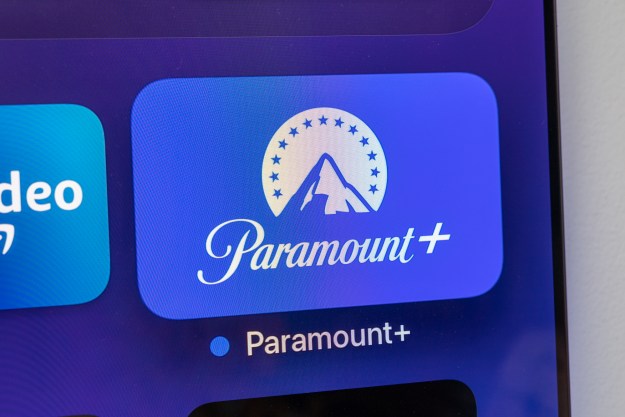 Interactive TV, enhanced TV, social TV; the second screen has many monikers.But whatever you’d like to call it, it is rapidly becoming a preferred method of watching television. So, what is it? Good question. You’re forgiven for being in the dark. Truth is, while there are plenty of industry folks talking about how wonderful it is and how popular it is becoming, we haven’t seen many pieces explaining what the second screen is, exactly – which is a shame, because there are plenty of people out there lamenting programming elements that an extra screen can remedy. With that in mind, let’s delve a little deeper.
Interactive TV, enhanced TV, social TV; the second screen has many monikers.But whatever you’d like to call it, it is rapidly becoming a preferred method of watching television. So, what is it? Good question. You’re forgiven for being in the dark. Truth is, while there are plenty of industry folks talking about how wonderful it is and how popular it is becoming, we haven’t seen many pieces explaining what the second screen is, exactly – which is a shame, because there are plenty of people out there lamenting programming elements that an extra screen can remedy. With that in mind, let’s delve a little deeper.
What is it?
Starting at the beginning, the first screen is a TV – the big box that’s been the centerpiece of living rooms for decades. The second screen, however, can be a variety of a different devices. Really, there are three basic criteria that a device must fit if it wants to call itself a second screen. One: connectivity. Two: app functionality. Three: to state the obvious, it must have a screen. So – your laptops, tablets, smartphones, and handheld gaming units can all be used as a second screen, though tablets currently seem to be the most popular option .
How it works
Let’s say you’re watching a golf tournament. If you’re a casual fan, you’re not watching every minute of a four day tournament; more likely, you’re flipping back and forth between the event and some other program. Most of the time, you’re popping in to see a few shots and check the score. Problem is: you might have to hang around for a bit to get that update. Not so with a second screen.
Today, many networks will provide additional coverage of the event online, which can bolster your viewing experience by storing replays for later viewing. This allows you to quickly view player information, and give you access to a live leaderboard that updates in real time. It’s an easy way to enhance your viewing experience, and is typically free to those with an existing Internet service provider.
The second screen is also ideal for social media integration, allowing you to quickly interact with users on Twitter or Facebook, to comment on what’s happening live, and to participate in polls or contests. This brings us to the crux of what the Second screen is: It isn’t necessarily interactive TV, enhanced TV, or social TV; it’s more like personalized TV. In the sports example we provided earlier, the second screen affords you the opportunity to watch the replays you want to watch, to check the stats you want to check, and to follow the players you are interested in. The world is moving towards personalization, and this is just another step.
App examples
There are myriad examples to point to, and new ones are popping up all the time. Marvel’s the Avengers: A Second Screen Experience, for instance, is a second screen app that provides additional content for the popular superhero movie melange. The app allows you to access character origins, screenshots, and plenty of other additional content. Many shows and movies feature their own apps nowadays, and while those tend to provide a narrower, more focused experience, second screen apps like the highly-successful Zeebox have a much broader appeal. Television shows and specific broadcasts can build their own page on Zeebox, which acts as a database. Viewers can use the service to find their favorite programs and discuss them via social media, or to get up to speed on the most recent goings-on.
When did this start happening?
It may have snuck up on you, but the era of the second screen is already here. According to Variety, Nielsen estimates that 36 percent of people aged 35-54, and 44 percent of people aged 55-64, use their their tablets to download associated apps and to interact on social media services while watching television programs. Still, despite the prevalence of their use as TV-enhancers, we’re only just beginning to see second screens marketed that way. That’s probably because the second screen trend grew organically. Only after consumers started using their devices to enhance TV did businesses realize they could capitalize on it.
If they play it right, TV networks and other media companies could profit greatly from this trend. The social media buzz that’s created through the second screen can quickly augment a brand’s popularity. And providing supplementary content on the second screen can make what’s happening on the first one that much more intriguing. All of this combines to ensure that eyeballs stay where the content providers, networks, and advertisers want them.
For proof that the networks are hopping on board with the second screen, look no further than the grand-daddy of all first-screen events, The Super Bowl. According to adage, CBS plans to provide second screen coverage of the game, and will add social elements and additional camera angles to encourage first-screen-only viewers to hop online.
It’s not hard to see how such a move would be a windfall for advertisers, as a second screen provides another avenue for them to peddle their respective products. Never is this extra ad-space more advantageous (no pun intended), than during The Super Bowl. Just look at the stats for last year’s game, which – at 111.3 million viewers – was the most-watched event in television history. Perhaps that’s why online ad-inventory for the Super Bowl – which will stream live on the net for only the second time in 2013 – is virtually sold out already. This according to the adage report referenced earlier, which also posited that consumers’ familiarity with the second screen has “grown exponentially since the 2012 event,” an event that garnered live-stream ad-buys in the $1 million dollar range.
Where this is going
Those kind of figures are encouraging businesses to think outside one box. Look at Nintendo’s tablet controller, or Microsoft’s Smart Glass for evidence that companies are going all-out in an effort to sync your screens and allow you to pack ever-more activity and information into your entertainment experience.
Many malign multi-tasking, holding it up as an example of this generation’s inability to focus their attention. But in the case of the second screen, it’s difficult to make that argument. Really, the second screen provides a way to optimize the TV experience, not a way to divide it. It gives networks a new way to deliver content, it gives advertisers another touch-point by which to contact consumers, it gives consumers an enhanced experience, and it’s probably here to stay.


